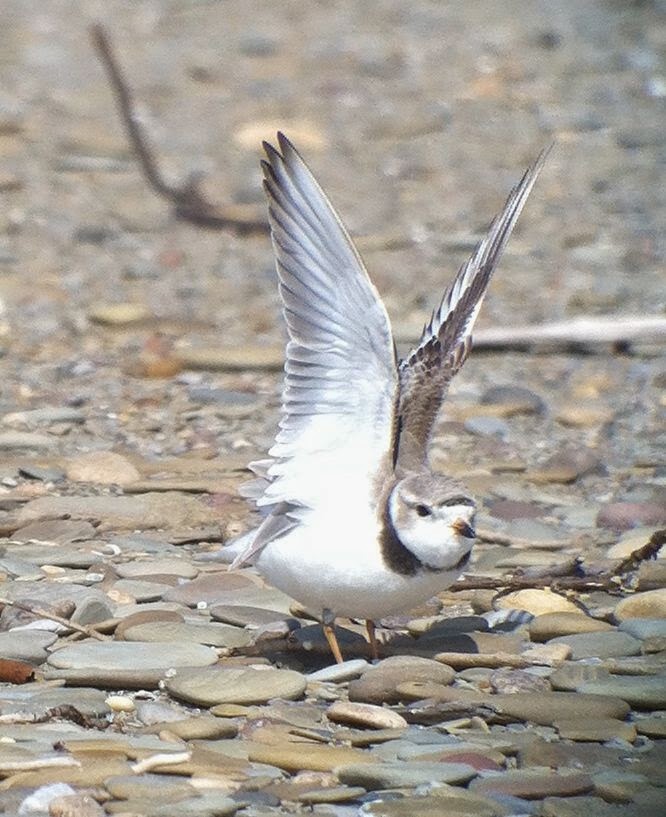It was very warm--68 degrees, but overcast and windy. The wind held a promise of the cold weather to come.
During my seasonal shorebird monitoring season, I am looking for this bird:
The endangered Great Lakes Piping Plover. Isn't it adorable?
I did not find one today. And probably won't tomorrow or the next day. Last season we only saw four piping plovers in a season that runs Mid-April through the end of June. Why do we monitor for them? Because in 1986 they were listed as federally endangered with only 17 nesting pairs known to us. Last season there were 66 known nesting pairs. Presque Isle is designated critical habitat by the US Fish & Wildlife Service and it mandates that the shoreline be monitored five days a week. Plovers used to nest here at Presque Isle but we humans screwed that up by disturbing their habitat. Now, we are working to welcome them back.
Today, the only shorebirds we saw were killdeer. But that doesn't matter. Some things we did see were these:
A dead loon. It was a hard winter.
A kite that had been left unattended, tied to a piece of driftwood, was still flying.
It finally came down. This is litter, folks. And piping plovers and other shore birds see a kite in the air as a predator.
Here's a feel for the weather conditions. For some reason, this video recorded without sound. The wind was coming about 25-30 mph from the south and it would be warm one moment and then icy cold the next.
We caught a brief glimpse of an American Kestral, a horned lark, the resident herring and ringed-bill gulls and the newly arrived Bonaparte gulls and Caspian terns.
The Caspian terns are some of my favorites; they're comical and should have their own Pixar movie.
Until then, here are a few highlights from last year:
A piping plover stretches its wings
A gorgeous (and well-fed) American Avocet
A Willet, in mid dance step
A Black-bellied Plover
A Semi-palmated Plover (left) with his cousin the Piping Plover (right)
A Baird's Sandpiper, a life-bird for me (this means it was the first time I had ever seen this species in person).
The big, bad, Peregrine Falcon, a predator to every bird on the beach.
I did not go out today; it's snowing and the temps have dropped into the 30s. But I will be back out there tomorrow morning when the temperatures promise to be biting cold. At least it won't be snowing.

































